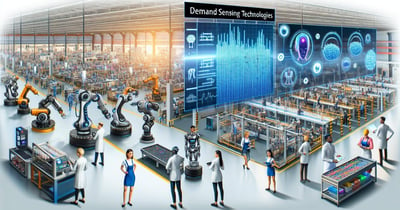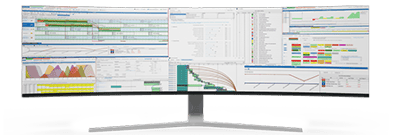AI in Automated Demand Sensing Technologies
As a Plant Manager, your role in ensuring seamless operations and timely delivery of critical medical supplies cannot be overstated. Traditional demand forecasting methods often fall short in accurately predicting market trends and customer demands. However, with the advent of AI-powered automated demand sensing technologies, a new era of precision and efficiency has dawned upon us.
In this blog, we'll look into the significance of AI in automated demand sensing technologies and explore how integration between PlanetTogether, a leading production planning and scheduling software, and prominent ERP, SCM, and MES systems such as SAP, Oracle, Microsoft, Kinaxis, and Aveva, can revolutionize the landscape of medical manufacturing.

Automated Demand Sensing
Automated demand sensing utilizes advanced algorithms and machine learning techniques to analyze vast amounts of data from various sources including historical sales data, market trends, weather patterns, and even social media sentiment analysis. This enables manufacturers to gain real-time insights into consumer behavior and demand patterns, thereby facilitating more accurate demand forecasting.
Automated demand sensing technologies powered by AI have revolutionized supply chain management and forecasting. These technologies utilize advanced algorithms and machine learning to analyze vast amounts of data in real-time, improving accuracy in predicting consumer demand. They can incorporate diverse data sources such as historical sales data, market trends, weather patterns, social media sentiment, and even economic indicators.
Key benefits include
Improved Accuracy: AI can identify patterns and correlations that traditional forecasting methods might miss, leading to more accurate demand predictions.
Real-Time Adjustments: By continuously analyzing incoming data, AI systems can adjust forecasts and inventory levels dynamically, responding swiftly to changes in demand.
Enhanced Efficiency: Automated demand sensing reduces the need for manual intervention, streamlining operations and reducing costs associated with excess inventory or stockouts.
Risk Mitigation: Businesses can better anticipate and prepare for demand fluctuations, minimizing the risks of overstocking or understocking products.
Integration with ERP Systems: These technologies often integrate seamlessly with Enterprise Resource Planning (ERP) systems, enhancing overall supply chain visibility and coordination.

The Role of AI
Artificial Intelligence (AI) lies at the heart of automated demand sensing technologies. Machine learning algorithms continuously learn from historical data and adapt to changing market dynamics, allowing for more accurate predictions and proactive decision-making. By harnessing AI, manufacturers can identify emerging trends, anticipate demand fluctuations, and optimize production schedules accordingly.


Integration with ERP, SCM, and MES Systems
Integration between automated demand sensing platforms like PlanetTogether and ERP, SCM, and MES systems such as SAP, Oracle, Microsoft, Kinaxis, and Aveva is crucial for streamlining operations and maximizing efficiency. These integrations enable seamless data flow between different departments, allowing for better collaboration and synchronization across the supply chain.
Benefits of Integration
Enhanced Visibility: Integration provides real-time visibility into demand forecasts, production schedules, inventory levels, and supplier activities, enabling plant managers to make informed decisions and quickly respond to changes in demand.
Improved Accuracy: By leveraging AI-powered demand sensing technologies, coupled with data from ERP, SCM, and MES systems, manufacturers can achieve higher forecast accuracy, reducing the risk of stockouts or overstock situations.
Optimal Resource Utilization: Integrated systems facilitate better resource allocation and capacity planning, ensuring that production facilities operate at maximum efficiency while minimizing costs.
Agile Operations: With real-time insights into demand fluctuations, manufacturers can quickly adjust production schedules, prioritize orders, and allocate resources as needed, thereby enhancing agility and responsiveness.
As a Plant Manager in a medical manufacturing facility, embracing AI in automated demand sensing technologies and integrating platforms like PlanetTogether with ERP, SCM, and MES systems is essential for staying competitive in today's dynamic market landscape. By harnessing the power of AI, manufacturers can achieve higher forecast accuracy, improve operational efficiency, and better meet the demands of customers and patients alike.
The journey towards a smarter, more agile manufacturing ecosystem begins with embracing innovation and leveraging cutting-edge technologies to drive transformative change.
Are you ready to take your manufacturing operations to the next level? Contact us today to learn more about how PlanetTogether can help you achieve your goals and drive success in your industry.